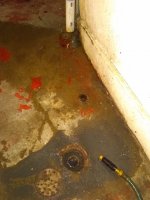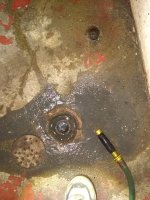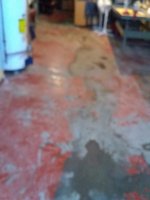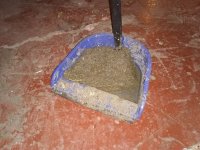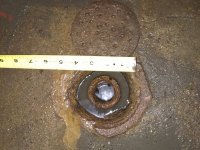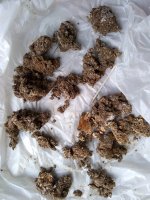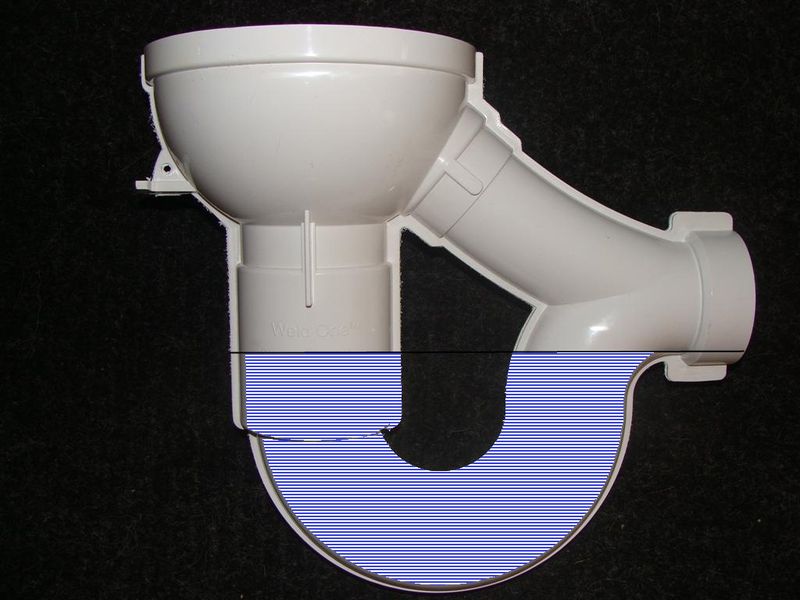Mnalep
Member
I have a two story home. Two kitchens, on both levels, drain into 1 drain line to the basement.
(I believe there used to be two drains into the basement, as there is a 2nd 'open hole' in basement floor, and there used to be a 2nd vent in the roof.)
Anyways, on occasion, I get water coming up from the floor drain (which is about 2 feet from the kitchen drain line, and 1 foot from the 'open hole'. I think that water coming up is from the kitchen drain, as I did see some noodles in the water. But I also see some brown 'sludge' like 'mud?'.
I am attaching a picture of the drain pipe, open hole, and floor drain. Are these all attached? (House built in 1928).
I've been able to plunge the floor drain, and get 'stuff' out of it. I've also put a hose with a 'bladder' sprayer in it down all three (drain line, 'open hole', and floor drain) and run the water for several minutes. But when I tried to put a small, hand held 1/4 inch snake, down the floor drain, I think I may have grabbed some mud? Same thing when I put snake down the cleanout on the drain pipe.
Oh, and there is standing water in the 'open hole' and floor drain, even while I run the hose water down the kitchen drain line.
Can someone explain if these openings (kitchen drain, 'open hole', and drain are tied together?
Is standing water in the floor drain, and 'open hole' normal?
Why did plunging floor drain seem to get sink drain flowing, but spraying hose down drain pipe seem to not disturb the standing water in the floor drain?
Could that 'sludge' be dirt/mud?
Any advice/explantion of what is going on would be appreciated!
Thanks,
Matt
(I believe there used to be two drains into the basement, as there is a 2nd 'open hole' in basement floor, and there used to be a 2nd vent in the roof.)
Anyways, on occasion, I get water coming up from the floor drain (which is about 2 feet from the kitchen drain line, and 1 foot from the 'open hole'. I think that water coming up is from the kitchen drain, as I did see some noodles in the water. But I also see some brown 'sludge' like 'mud?'.
I am attaching a picture of the drain pipe, open hole, and floor drain. Are these all attached? (House built in 1928).
I've been able to plunge the floor drain, and get 'stuff' out of it. I've also put a hose with a 'bladder' sprayer in it down all three (drain line, 'open hole', and floor drain) and run the water for several minutes. But when I tried to put a small, hand held 1/4 inch snake, down the floor drain, I think I may have grabbed some mud? Same thing when I put snake down the cleanout on the drain pipe.
Oh, and there is standing water in the 'open hole' and floor drain, even while I run the hose water down the kitchen drain line.
Can someone explain if these openings (kitchen drain, 'open hole', and drain are tied together?
Is standing water in the floor drain, and 'open hole' normal?
Why did plunging floor drain seem to get sink drain flowing, but spraying hose down drain pipe seem to not disturb the standing water in the floor drain?
Could that 'sludge' be dirt/mud?
Any advice/explantion of what is going on would be appreciated!
Thanks,
Matt

